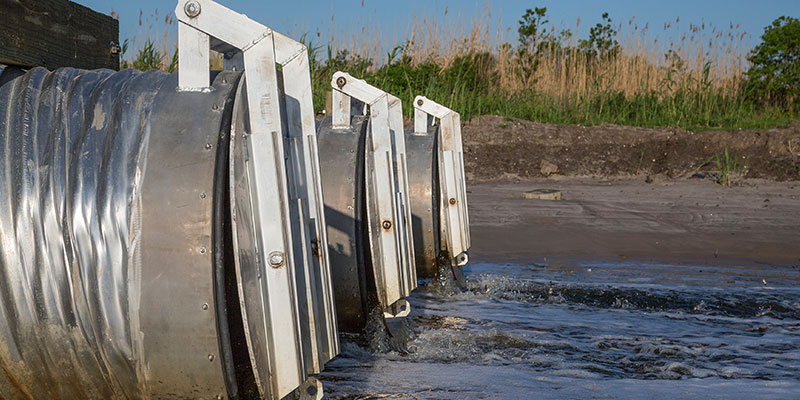Baseline Data for Development of a Monitoring Program for Infaunal and Epifaunal Invertebrates in Saint John Harbour
Principal Investigator - Dr. Heather Hunt, Professor, University of New Brunswick (2011-2013)

Challenge
Benthic invertebrates are ideal organisms to monitor water pollution because they respond quickly to disturbances, can be sampled in the quantities needed to detect change, and are not very mobile. Benthic invertebrates are also ecologically important because they serve as a food source for many organisms including commercial fish species, and they influence important ecological processes such as cycling of elements, water columns, and the transport and stability of sediments. Information about benthic marine invertebrates is crucial to develop a regional cumulative effects monitoring program.
Dr. Heather Hunt is leading a team of researchers to determine baseline data on benthic invertebrates in the Saint John Harbour, including infaunal invertebrates that live within sediments and epifaunal invertebrates that live in rocky areas and on sediments. This will provide data to the Saint John Harbour Environmental Monitoring Partnership (EMP) – a partnership of industry, government and non-governmental organizations, who are undertaking the development of a regional monitoring framework to detect cumulative effects. The work being conducted by Dr. Hunt’s team includes determining which sampling strategies are best to collect invertebrates, which harbour sites are reference locations, and which sites have been most affected by human activities.
Project
Dr. Hunt’s team is examining seasonal and year-to-year changes in the Saint John Harbour’s infaunal benthic invertebrates, their spatial patterns of abundance, and taxonomic sufficiency. Sampling was conducted in 2011 and 2012, and will continue into 2013. Seasonal variation in the abundance and diversity of invertebrates is being compared between sites, with the goal of determining the optimal sampling season. The team is examining the effect of sample size, spatial patterns of abundance including the effect of depth and differences between the inner harbour and outer harbour, and taxonomic sufficiency for infaunal benthic invertebrates. Year-to-year changes will be examined by sampling specific sites in all three years. The team is also examining different strategies for sampling areas with hard bottoms, including cobble-filled collectors to examine recruitment of rock-settling invertebrates on gravel and cobble bottom areas of the harbour.
Data relating to abundance and diversity of benthic organisms will be combined with data from the other research teams working on the Saint John Harbour, to assess potential relationships between marine invertebrate assemblages and their habitat.
Although the research is ongoing, some preliminary results are available and have been shared with the SJH-EMP. Data from 2011 infaunal invertebrate sampling shows a greater species richness in the outer Saint John Harbor, and that the inner harbour sites were significantly different from outer harbour sites.
Outcomes
- Changes in practice as this work is expected to directly influence the way monitoring is conducted by the partners within the Saint John Harbour-EMP. Project findings will allow the SJH-EMP to develop an optimal sampling strategy and to select reference sites for future invertebrate monitoring to identify cumulative effects of human activities.
- Development of collaborations as the Saint John Harbour-EMP has three research teams working on components of the area’s monitoring framework. The coordinated and collaborative effort means that teams and partners have met several times to discuss how to best coordinate the research and the ongoing monitoring practices of the members.
- Once the best sampling strategies, reference locations, and sites most affected by human activities have been identified, these will be used to monitor cumulative impacts of existing and new development in the Saint John Harbour, increasing consistency and comparability between monitoring programs of various partners, allowing for targeted actions and decision-making in the area.




